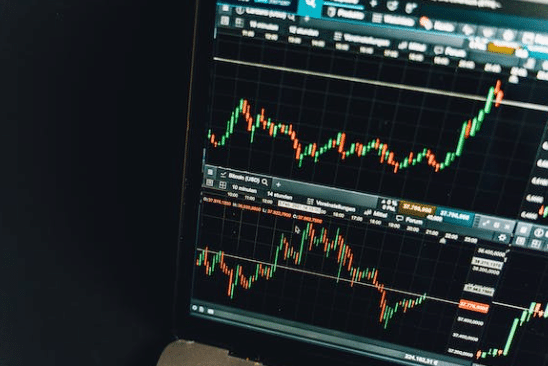“Trading for a Living” provides a holistic overview of the stock market, offering a comprehensive guide for both new and seasoned traders. The book is a journey through the intricacies of the financial market
In the world of finance and trading, a few books stand the test of time, offering invaluable wisdom and actionable insights to those navigating the labyrinth of financial markets. Among such seminal works, “Trading for a Living” by Dr. Alexander Elder is a distinctive masterpiece. With his professional background as a psychiatrist, Elder brings a unique perspective to the realm of trading, intertwining the world of finance with the complex dynamics of human psychology. As any seasoned trader will affirm, success in the markets is as much about mastering your emotions as it is about understanding economic indicators and trading strategies.
“Trading for a Living” provides a holistic overview of the stock market, offering a comprehensive guide for both new and seasoned traders. The book is a journey through the intricacies of the financial market, using easy-to-understand language to break down complex concepts. It offers essential tools and strategies for not only understanding market dynamics but also how traders can control their actions and reactions within these volatile spaces.
In addition to its theoretical grounding, the book stands out for its practical orientation. Elder doesn’t merely explain the stock market; he provides the reader with a gamut of trading strategies that he has tested and honed over years of personal experience. These strategies range from technical analysis to risk management, offering a well-rounded education for any trader.
But perhaps the most significant aspect of “Trading for a Living” is its emphasis on psychology. Elder firmly believes that the key to successful trading lies within the trader’s mind. He asserts that understanding one’s own psychological makeup is as crucial as understanding the market’s trends. With this focus, Elder’s work becomes more than a trading book; it is a guide to self-discovery and mastery within the context of the financial markets.
The following exploration of “Trading for a Living” will highlight 18 key ideas that emerge from this timeless work. Each idea will be discussed in-depth, coupled with relevant examples, to provide a comprehensive understanding of Elder’s philosophy and how these principles can be applied in today’s market environment.
Key Ideas from Trading for a Living by Alexander Elder
- Triple Screen Trading System: Elder proposes a three-step process for successful trading. The first screen involves identifying the direction of the primary trend, the second screen looks for a market wave that goes against this trend, and the third screen uses a technical indicator to pinpoint entry points. This approach ensures that traders do not rely solely on a single indicator, thereby reducing risk.
- Discipline is Essential: Trading isn’t about making quick profits; it’s about discipline and consistency. Elder highlights the importance of following your trading plan and strategies without getting swayed by the market’s volatility.
- Understanding Crowd Behavior: The financial markets are driven by the collective actions of traders. Elder encourages understanding crowd behavior, as markets often move based on traders’ collective sentiment rather than individual actions.
- The Importance of Money Management: Elder emphasizes the necessity of having a solid money management plan. This includes setting stop losses, diversifying investments, and never risking more than a certain percentage of your capital on a single trade.
- Psychological Barriers in Trading: Traders often fall prey to psychological barriers such as fear, greed, and hope, which can derail their trading strategy. Elder advises mastering these emotions to maintain objectivity in trading decisions.
- Technical Analysis is Crucial: Elder underscores the importance of technical analysis in identifying market trends and patterns. He advocates for a solid understanding of indicators such as Moving Averages, Bollinger Bands, and the Relative Strength Index (RSI).
- Understanding Bull and Bear Markets: Each market phase requires a different trading strategy. Elder provides insights on how to distinguish between bull and bear markets and adapt trading strategies accordingly.
- The Role of Volume in Trading: Elder dedicates a significant part of his book to explain the role of volume in trading. He explains how volume, combined with price movement, can offer valuable insights into the strength of a market trend.
- Trading as a Business: Elder stresses that trading should be treated as a business, not a hobby. This means conducting thorough research, making calculated decisions, and continuously evaluating your performance.
- The Impact of News on Markets: Elder highlights how news can significantly influence the markets, causing sudden volatility. He advises traders to factor in potential news impacts as part of their overall trading strategy.
- The Power of Patience: Elder emphasizes the importance of patience in trading. Sometimes, the best action is to take no action at all. Waiting for the right opportunity is often a winning strategy.
- The Dangers of Overtrading: Overtrading can lead to significant losses. Elder warns against this common pitfall, advising traders to focus on quality trades over quantity.
- The Principle of Divergence: Elder introduces the concept of divergence, where the price of a security moves in the opposite direction to an indicator. This often signals a potential reversal, providing a valuable trading signal.
- Cultivating an Independent Mindset: Elder encourages traders to think independently and not follow the crowd blindly. He believes that successful traders make their own decisions based on thorough analysis and not on popular opinion.
- The Significance of a Trading Diary: Elder strongly advocates for maintaining a trading diary. This helps traders learn from their past trades, both successful and unsuccessful, and continuously improve their strategies.
- The Concept of Safe-fail: Elder teaches that it’s better to fail safely than to aim for a big win and end up with a big loss. He suggests starting small, testing strategies, and then gradually increasing your exposure.
- Understanding the Market’s Structure: Elder explains the hierarchical structure of the markets – from the broad market to sectors to individual stocks – and how understanding this structure can help traders make better decisions.
- The Value of Continuous Learning: Finally, Elder underscores the importance of continuous learning in trading. The markets are dynamic, and so should be the trader’s knowledge and strategies.
In conclusion, “Trading for a Living” by Dr. Alexander Elder is more than a mere trading guide. It is a holistic exploration of the financial markets, blending technical analysis, trading strategies, and most importantly, the psychological aspects of trading. Elder’s unique perspective, rooted in his professional background as a psychiatrist, provides traders with a multidimensional understanding of the stock markets.
By distilling complex concepts into easy-to-understand language, Elder empowers traders to take control of their financial destiny. The book is not just about understanding the market’s trends, but about understanding oneself. It’s about discipline, patience, and continuous learning. It’s about treating trading as a business, not as a game of chance.
“Trading for a Living” is a guide for every trader, regardless of their level of experience. It provides an enriching perspective on the stock markets, helping traders make more informed, confident, and profitable decisions. Whether you are a beginner looking to dip your toes in the stock market, or a seasoned trader seeking to refine your strategies, this book offers invaluable insights and lessons that can shape your trading journey. The principles outlined in this book are timeless, resonating with the ever-evolving dynamics of financial markets, making it a must-read for anyone serious about trading for a living.
Did you know? Traders like to use our co-working space in Bangalore
Learn more about our coworking space on our YouTube channel Work Theater Studios where we talk about a variety of topics including personal finance, entrepreneurship, business and life.
Did you know? We also have a private theatre in Bangalore.




